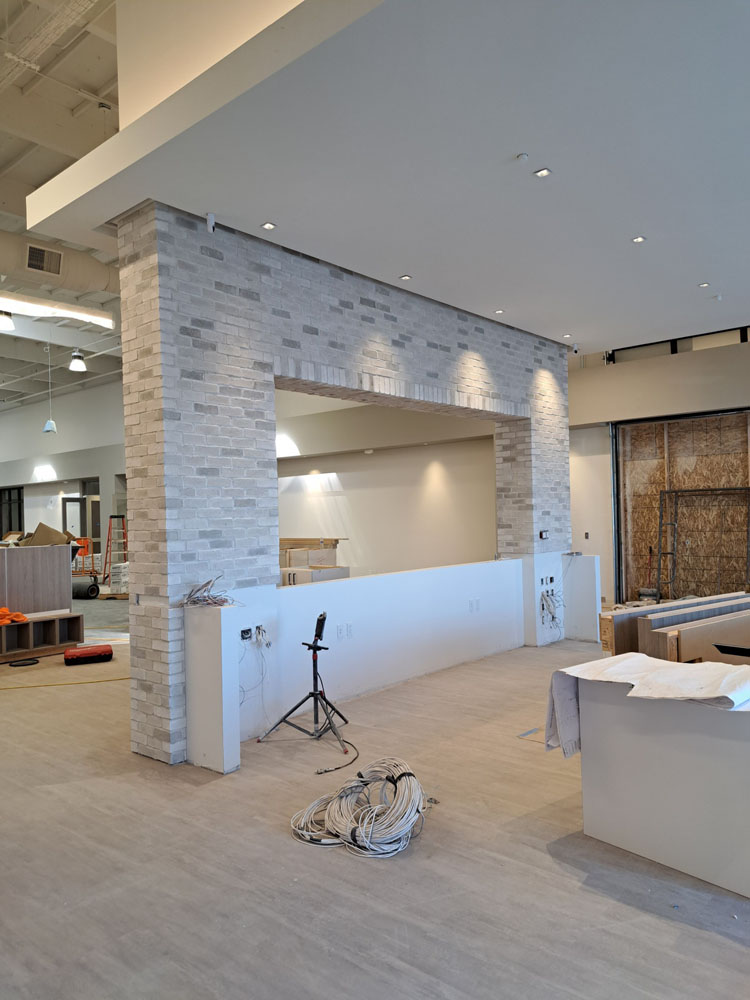Introduction
Designing a path is much more than just laying down some stones or paving materials. It’s about creating a journey, a statement, and an experience. Whether you lean towards the old-world charm of classic designs or the sleek lines of modern aesthetics, the way you approach your Masonry Walkway can drastically transform your outdoor space. In this article, we'll explore the evolution of path design, delving into both classic and modern styles while providing practical tips on how to adapt these designs to suit your personal taste and landscape requirements.
Understanding Path Design: Why It Matters
When we think about pathways, we might envision mere functional routes connecting different areas of our gardens or yards. However, the significance of path design extends beyond functionality—it plays a vital role in enhancing the overall aesthetic appeal of your outdoor space. A well-designed path invites exploration and serves as a visual guide that leads visitors through your garden.
The Importance of Masonry Walkways in Landscaping
Masonry walkways are particularly significant because they offer durability and versatility. Not only do they withstand various weather conditions, but they also provide an opportunity for creativity with different materials, patterns, and colors.
Benefits of Using Masonry for Your Paths
- Durability: Masonry materials like brick or stone can last for decades with minimal maintenance. Aesthetic Versatility: You can easily mix and match colors and textures to create unique looks. Eco-Friendly Options: Many masonry options are sustainable and environmentally friendly.
From Classic to Modern: A Historical Perspective
Classic Path Designs: Timeless Elegance
Classic path designs often feature natural benefits of masonry walkways materials such as cobblestones or bricks arranged in intricate patterns. These paths often evoke a sense of nostalgia and charm.
Characteristics of Classic Pathways
- Symmetry: Classic paths tend to be symmetrical, reflecting balance and harmony. Natural Materials: Use of local stones or reclaimed bricks enhances character. Curved Lines: Gentle curves are often incorporated to mimic nature's flow.
Modern Path Designs: Sleek Simplicity
In contrast, modern path designs embody minimalism using clean lines, geometric shapes, and innovative materials like concrete or resin.

Features of Modern Paths
- Asymmetrical Patterns: Often embrace irregular layouts for a more organic feel. Bold Colors: Bright hues and monochromatic themes are common. Integrated Lighting: Smart technology features like LED lights enhance usability at night.
Key Elements That Influence Path Design
Materials Matter: Choosing the Right Ones
The choice of material significantly impacts the overall style of your pathway.
| Material | Pros | Cons | |----------------|--------------------------------|--------------------------------| | Brick | Aesthetically pleasing | Can be slippery when wet | | Flagstone | Natural look | More expensive | | Concrete | Highly durable | Less visually appealing | | Gravel | Excellent drainage | Requires regular maintenance |
Color Palette Considerations
Colors impact moods; earthy tones evoke tranquility while vibrant hues can energize spaces.
Incorporating Nature into Your Path Design
Using Plants Alongside Your Pathway
Integrating plants along your walkway not only beautifies it but also softens hardscapes.
Ideas for Plant Pairings
- Low-growing flowers add color without obstructing views. Ornamental grasses provide texture and movement.
Creating Harmony with Surroundings
Your pathway should complement existing landscaping elements rather than compete with them.
Lighting Strategies for Enhanced Visibility
Importance of Illuminating Your Walkway
Proper lighting ensures safety while accentuating design elements at night.
Types of Outdoor Lighting
Solar Lights LED Strips Wall-mounted LanternsTextures That Transform
Adding textures creates visual interest in your path design.
Combining Different Materials
Mixing materials like gravel borders with brick pathways offers contrast that draws attention.
Adapting Styles Based on Space
Different spaces call for different approaches!
Small Spaces vs Large Areas
In smaller areas, compact designs work wonders whereas larger spaces allow for grander layouts.
Path Width Considerations
Path width can influence how welcoming your space feels:
- Narrow paths create intimacy. Wider paths promote openness.
Maintenance Tips for Longevity
The longevity of your masonry walkway depends on proper maintenance practices.
Cleaning Techniques
Regular cleaning prevents moss buildup:
Sweep debris regularly. Use a power washer seasonally if needed.Repairing Damaged Sections
Address cracks or loose stones promptly to avoid further damage!
Incorporating Technology into Design
Smart pathways feature technology that enhances functionality!
Automated Lighting Systems
Motion-sensor lights provide convenience without sacrificing safety.
Cost Considerations When Designing a Path
Design choices directly affect budget!
Estimating Costs
| Material | Average Cost per Square Foot | |----------------|--------------------------------| | Brick | $10 - $20 | | Flagstone | $15 - $30 | | Concrete | $5 - $15 |
Sustainability in Path Design
Embracing eco-friendly practices benefits both nature and aesthetics!
Using Recycled Materials
Opting for recycled options reduces waste while maintaining style!
FAQs About Path Design
What’s the best material for high traffic areas?- Opt for durable materials like concrete or stone that endure wear over time.
- Absolutely! Just ensure you have proper tools and follow guides closely.
- Think about what resonates with you personally—consider elements from both styles!
What’s the typical lifespan of masonry walkways?
- With proper care, they can last several decades!
Are there eco-friendly options for pathway materials?
- Yes! Look into permeable pavers or reclaimed stones which minimize environmental impact.
How do I incorporate lighting effectively?
- Strategically place lighting fixtures along edges or beneath steps to illuminate without overwhelming the space.
Conclusion
Designing pathways is an art form that beautifully marries function with style—whether you’re embracing classic elegance or modern chicness, there’s no wrong way to express yourself through your masonry walkways! By understanding key design principles while incorporating personal touches along with sustainability practices, each step taken on these paths can become part of an extraordinary journey through your outdoor spaces! So why wait? Let’s get started on transforming those bland routes into captivating journeys—after all, every great adventure begins with a single step!